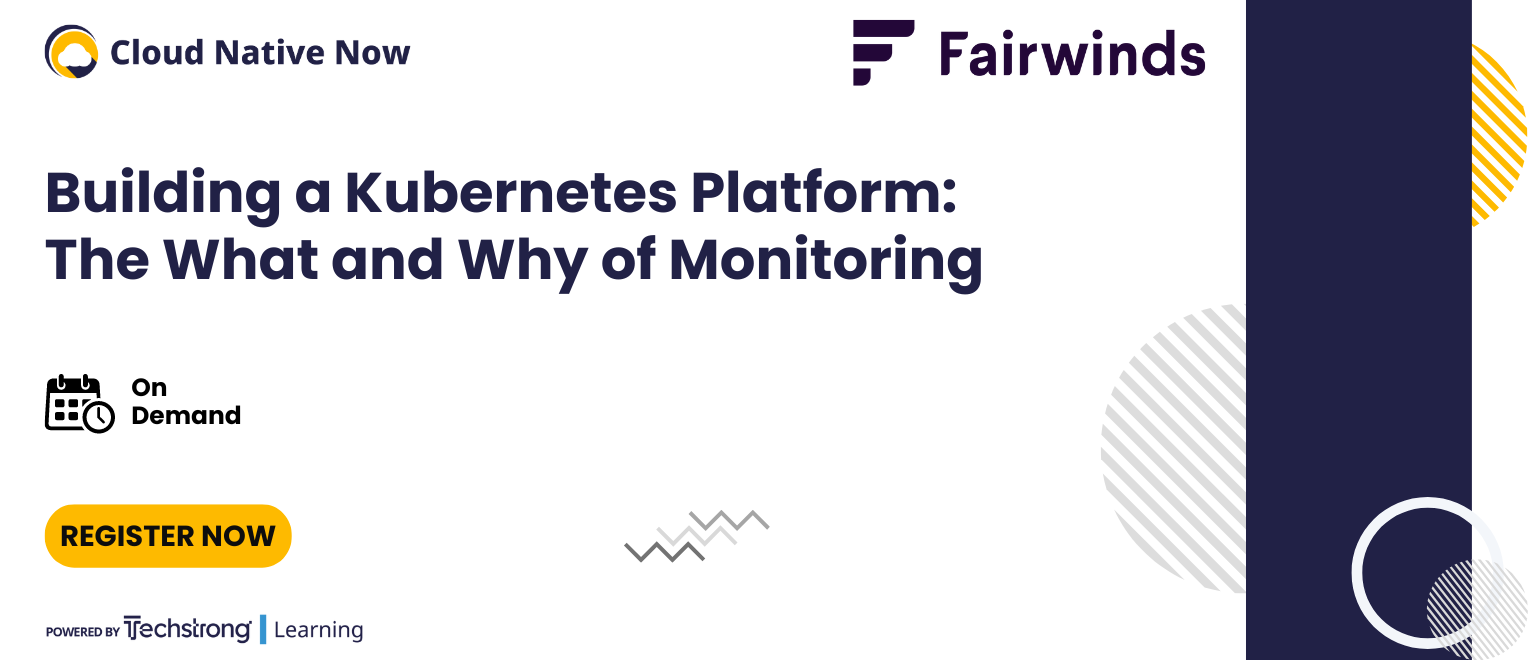Webinar
Think About Your Audience Before Choosing a Webinar Title

Sponsored by

What You’ll Learn in This Webinar
There are so many things you can monitor in your Kubernetes platform, but it's important to understand what is mission-critical and what is a nice-to-have. So, how do you determine which is which? What is mandatory when it comes to Kubernetes monitoring and how can you develop best practices?
In this Techstrong Learning Experience, we'll focus on determining what to monitor and why. We'll also give you actionable insights and tips you can use it to build your Kubernetes monitoring best practices. You'll learn how to build a Kubernetes platform that your developers can use to ship applications faster while ensuring monitoring best practices are followed.
Join Robert Brennan, vice president of product development, Fairwinds, and Dexter Garner, sales engineer at Fairwinds as they help you build a Kubernetes platform that scales reliably, securely and cost-effectively.
Key Takeaways:
- What should you be monitoring in your Kubernetes platform?
- Monitoring best practices to follow
- Why Kubernetes monitoring is so critical to cloud-native application development







